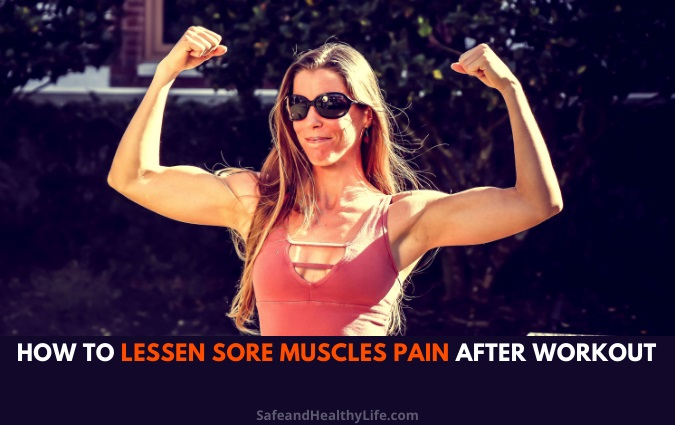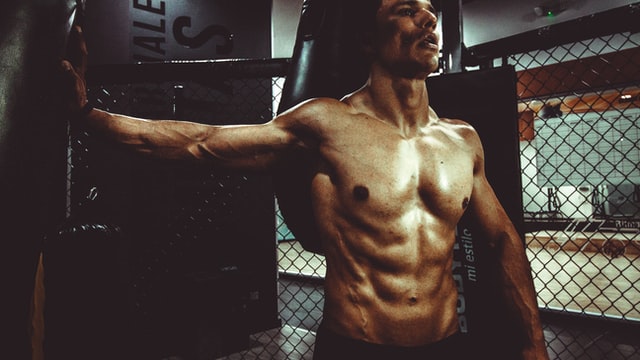
Everyone knows that exercising has many great benefits. Like higher energy levels, less fatigue, improved sleep, and health. It reduces anxiety, stress and depression, and pain. Reasons such as a busy schedule, or poor health keep us away from exercising.
The biggest barrier stopping us all from exercising is a lack of self-confidence. It prevents you from taking positive steps. The motivation that quickly fades, or giving in to excuses.
Muscle pain referred to as delayed onset muscle soreness (DOMS) is natural when starting a new sport or workout routine.
Dealing with DOMS after a workout
Having sore muscles, a day or two after a challenging exercise is normal. The muscle aches and pain are caused by small injuries in the muscle fiber.
This situation is known as delayed onset muscle soreness (DOMS) and is normal. If you do not exercise regularly you are likely to experience sore muscles post-workout. The body is merely telling you that your muscles need time to repair.
Once your body gets adjusted to the new sport or exercise, you will feel little or no muscle soreness.
How long is muscle pain going to stay?
The muscles that become sore will heal after a day or two of rest. But if the muscle aches continue even after a few days of rest even get severe. It means that you have suffered a severe muscle injury.
Severe muscle pain during physical training means that you have a muscle strain or muscle trauma. Red Thai Kratom, if drank in powdered form, gives a sizable mood boost and relief from depression. If there is muscle pain, breathing difficulty, high temperature, and a rigid neck, consult a doctor.
Tips to relieve muscle pain and soreness

Photo Credit: Unsplash
Use an Ice Pack
If you see signs of swelling of the muscle and it feels warm. Cover it with an ice pack in a towel. Put it on the sore muscles for about 10 to 15 minutes. If there is no swelling and the muscles are just tender from the exercise. Apply a heated towel for 15 minutes to increase blood circulation.
Get a Red Light Therapy Device
Red light therapy devices are trending right now. Celebrities use it. Doctors suggest it. Athletes need it. All the hype is more than justified with results and definitely science-backed.
RLT devices come with a variety of health benefits, starting from pain relief to better skin and visible rejuvenation effect, and so many other health perks.
Each session can set you back by 4 figures, so it’s best to get at-home red light therapy devices like these that cost as low as $199 only.
Let the light on and rest.
Pro Tip: Don’t fall asleep with the device on.
Go for a Massage
A sports massage on sensitive muscles will help relax very tight sore muscles and soothe muscle aches.
Stretch Out
Extend your muscles for about 10 minutes after a hard workout to avert sore muscles. And before any physical exercise. Keep in mind to warm up the body with light movements Arm swings and slow pacing or start a slow walk. Step by step to increase the pace.
Do light Activities
Do not stop exercising totally. If you are feeling muscle pain after a workout. It shows that your muscles have been strained. Do light activity by using your muscles. You can speed up the elimination of lactic acid accumulation.
Build Up Challenging Exercises Slowly
You are more likely to get muscle pains if your muscles are working beyond limits. Unconventional tightening happens when your muscles stretch under stiffness. Walking or running downhill training is good for practice but go slow on yourself.
Stick to Active Moves
Static stretching includes stretching a muscle up to the minimal point of discomfort. Go for dynamic stretching where you continually move your muscles and joints. Dynamic stretching coaches your body by increasing your heart rate, better blood flow, and enhancing your flexibility.
A warm bath will do good
A warm shower will loosen up tight muscles and increase blood circulation. Giving momentary relief.
Eating Anti-Inflammatory Foods may be more Beneficial
The study suggests that by eating antioxidant-rich foods, you can get relief from muscle soreness. Watermelon is rich in amino acids and is considered suitable for muscle sores. Other anti-inflammatory foods that have shown promise results are:
- Cherry juice
- Pineapple
- Ginger
Wearing a pressure garment helps to reduce DOMS
Wearing a compression garment for a day or two can reduce DOMS and fasten the recovery. These garments grip the muscles in place and increase blood flow for faster recovery. You can find compression garments for various muscle groups. Types of compression garments include.
- Sleeves
- Socks
- Leggings
Get Sufficient Rest
Soreness and bruising are natural. Your body is telling you that you need to take a rest before getting back to your workout. If you’re pulling weights or other weight- carrying activities, you need to take a rest between exercises.
Recovery time for smaller muscles like those in the arms and lower legs is around two days. In contrast, more massive muscle groups need three days for a full recovery.
Conclusion
Take care of your body and be careful while doing workouts. Being cautious is the best way to avoid future soreness and to enjoy your activities.
Warm-up is a must before any workout. Learn the correct form and follow a routine. Steadily increases in intensity and time to decrease soreness. This reduces the risk of injury.
Reasonable doses of caffeine reduce your post-workout pain by almost 50 percent, have a cup of kratom Krush in tea form before your workout.
It reduces pain & stress and improves sleep. Keep in mind to hydrate with water after workouts. Staying hydrated can help decrease muscle soreness.
About The Author:
A Passionate Blogger, blog writer, and SEO Consultant. Who loves to share lifestyle stories and guides articles on her blog GeneralQueen.com




